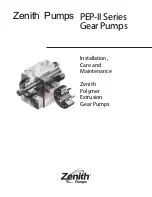
Option: TC.ACS.CANmp Interface
Configuration of a CAN Protocol
REGATRON
Performance. Precision. Quality.
TC.ACS - Device Manual (V04.60) - 26.4.2022
62 / 66
66
12.5.1 Definitions
12.5.1.1 Direction of Transmission
12.5.1.2 Data Types
12.5.2 General Configurations
12.5.3 Message Attributes and their possible Values
TX message:
Regatron -> Customer
RX message:
Customer -> Regatron
Sint16, Sint32, Sint64:
Signed integer 16, 32 and 64 bit (signed value)
Uint16, Uint32,
Uint64:
Unsigned integer 16, 32 and 64 bit (unsigned value)
Float32, Float64:
Floating point number single (32 bit, Float32) and double precision (64 Bit, Float64)
CAN baud rate:
The CAN baud rate is the speed of data transfer via a CAN bus. Possible settings are: 1
MBit/s, 500 kBit/s, 250 kBit/s, 125 kBit/s, 50 kBit/s, 20 kBit/s.
Customised signal
factor:
A signal is multiplied by the signal factor. It can be used to represent the number of
decimal places or to multiply the signal value (with low accuracy requirements) in a 16
bit signal, which would require at least a 32 bit signal (Uint32, Sint32, Float32). 0 to 3
decimal places (signal factor 1, 0.1, 0.01, 0.001) or a multiplication of the signal value
with 10, 100 or 1000 are default configurations. Is this not sufficient then up to 3
customised signal factors can be configured. There are no limitations for the
configurable values.
CAN ID:
Valid ID's are 0 … 0x7FF. 29 bit identifier is currently not supported. A received
message with an ID greater than 0x7FF would be ignored (CAN standard 2.0B).
RX message:
To configure an RX message the cycle time has to be 0.
Cyclic message:
Configurable cycle times are: 1 ms, 2 ms, 5 ms, 10 ms, 20 ms, 50 ms, 100 ms, 200 ms,
500 ms, 1000 ms.
Sync message:
In a sync message is the number of received sync signals configurable until the sync
message is to be sent. Valid values for the number of sync signals are 1 … 8191.
SyncID message:
A syncID message will be send if a syncID signal with the configured syncID is received.
Valid values for the syncID are 0 … 8191.
DLC:
The DLC (data length code) defines how many bytes of the payload will be sent. If only
the first byte of a 16 bit signal is a valid value, then an appropriate configuration of the
DLC can prevent the sending of the second byte. Valid values for the DLC are 1 … 8
depending on the number of configured signals and data types.





































